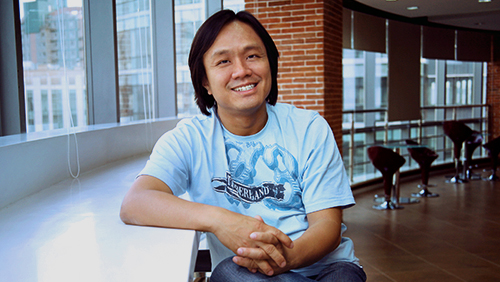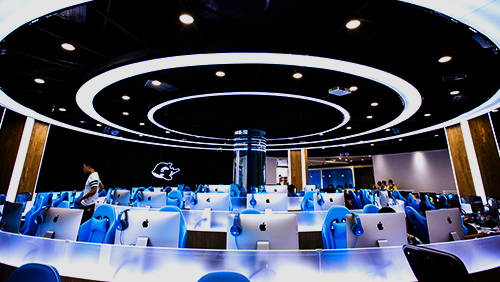Ourgame CEO Frank Ng shared with CalvinAyre.com details of his company’s eSports ventures outside China and explained why the US is an attractive market for eSports.
 eSports, a growing sector for competitive multiplayer video game competitions, has long been a phenomenon in Asia. Games such as Counter Strike Global Offensive (CSGO), League of Legends, Dota 2, and Hearthstone have gone from being hobbies to arena-filling, seven-figure prize pool events.
eSports, a growing sector for competitive multiplayer video game competitions, has long been a phenomenon in Asia. Games such as Counter Strike Global Offensive (CSGO), League of Legends, Dota 2, and Hearthstone have gone from being hobbies to arena-filling, seven-figure prize pool events.
But in the last couple of years, eSports’ popularity has surged in the US as Americans have begun to take up the games in both competition and spectator events. And this is why companies are jumping in the eSports bandwagon in the United States. One of these companies is gaming and sports powerhouse Ourgame International Holdings Ltd, which announced last month that it is in the early stages of developing an eSports arena in Las Vegas.
Ourgame operates Wangyu Dianjing eSports Arena , a 14,000-square-foot facility and at its core is a tournament space with theater seating for an audience of 200, which features a broadcast studio, 150 gaming stations and more.
Ourgame also acquired the World Poker Tour (WPT) last year for a price tag of $35 million, aiming to pattern what the tournament series has done for poker—to build an internationally connected set of competitions.
“We plan to utilize the distribution footprint and production skills that WPT has developed over the past 15 years to do for eSports what happened in poker,” Ng told CalvinAyre.com.
eSports market: China vs US
 Market researcher Newzoo said that audience-wise, Asia contributes 44% of global eSports enthusiasts while North America chips in 19%.
Market researcher Newzoo said that audience-wise, Asia contributes 44% of global eSports enthusiasts while North America chips in 19%.
But in terms of revenue, it’s a different story. This year, North America is expected to strengthen its lead, with an anticipated $175 million generated through merchandise, event tickets, sponsorships, online advertising, and media rights, accounting for 38% of the global esports revenue, while China and South Korea together will contribute $106 million, or about 23%.
According to Ng, China has the largest audience for eSports in the world, accounting for over 100 million out of the globally projected audience of around 225 million.
“From what we see in the local market and the analysis we read, this number is expected to continue growing in the future and we are excited to be creating an offering that will allow the large player base of Chinese players to connect and compete with other players from around the world,” Ng said.
“In addition to that the competitive spirit inherent in the US culture, rapid expansion in eSports happening in the market makes it a target market for us.”
The location of Ougame’s Las Vegas arena is yet to be determined, but Ng said that the company has already checked out several potential locations and spoke with strong potential partners.
“I’m excited by all of the interest we’re receiving and the opportunity of expanding the network to the US. We see Las Vegas as a market that offers huge potential for us and that we compliment well with the eSports demographic that we plan to attract,” Ng said. “Success here would be linking Las Vegas into our global network and making it an eSports capital for serious play as it has become for so many other gaming activities.
Next stop after US
Ourgame would like to build at least a dozen eSports arenas worldwide within the next three to five years.
Beyond the US and China, the company is evaluating regions all over the world with Northern Europe, Russia and Korea on top of its list, primarily because of the eSports interest in these places but also because the company is looking to create a broad geographic footprint for its competitive gaming network.
“Our goal is to connect players and fans via a network of eSports arenas around the world which can serve as tournament venues and content generation hubs,” Ng said. “We see these arenas being designed and operated to meet the needs of their local market but with the added excitement of hosting regularly scheduled global mega-tournaments that provide a structure for teams from different countries to battle one another.”